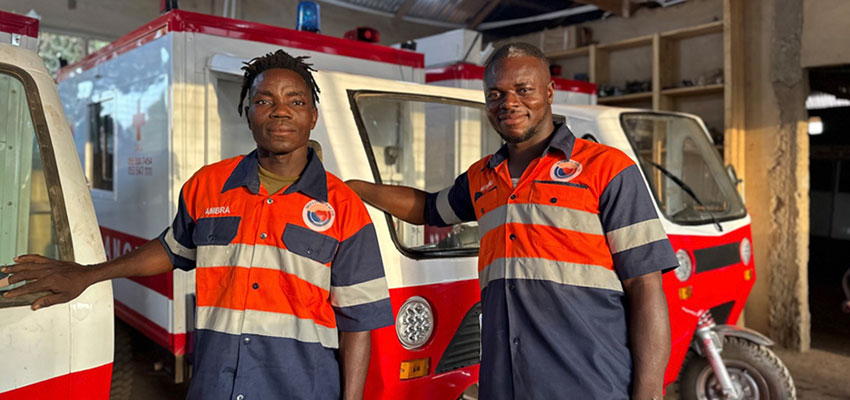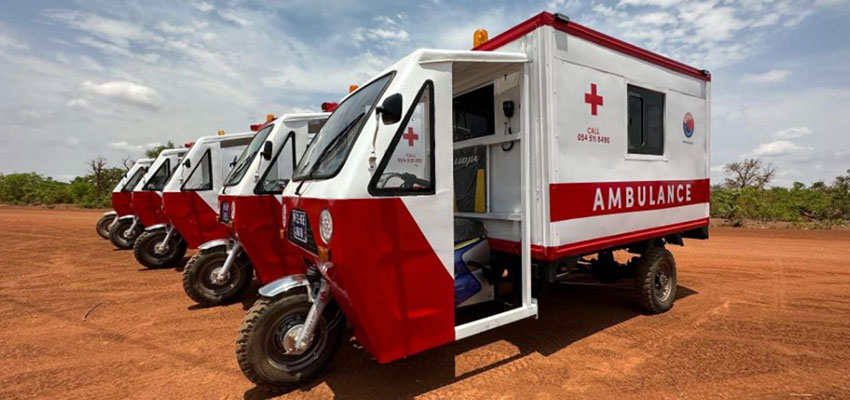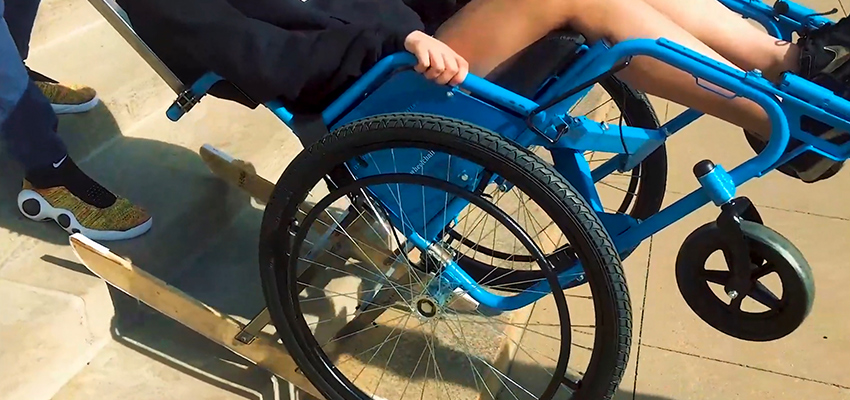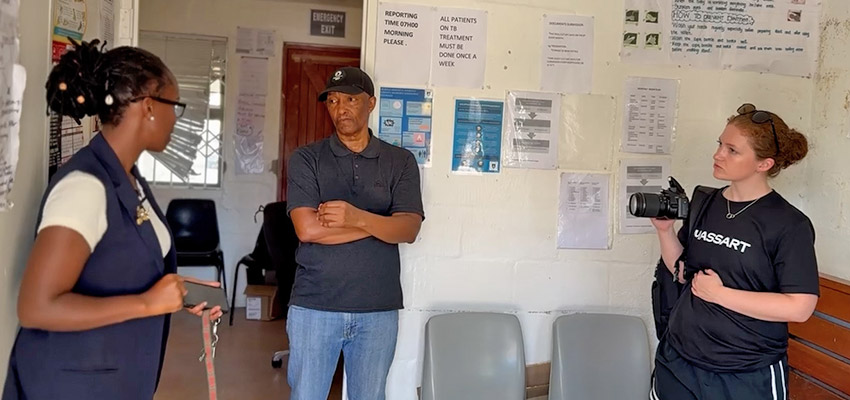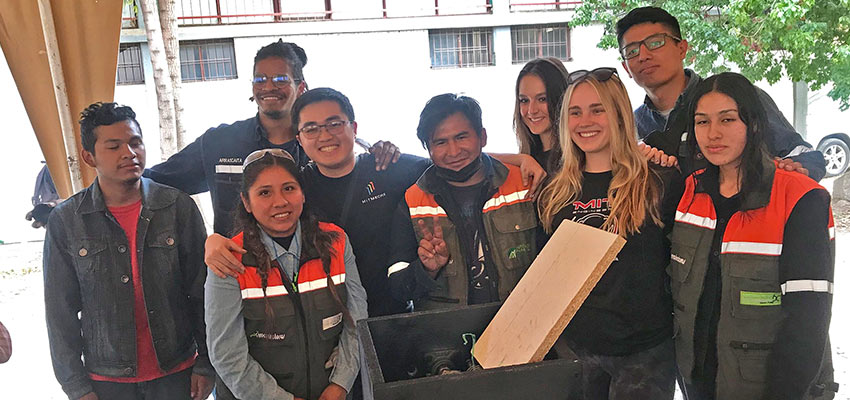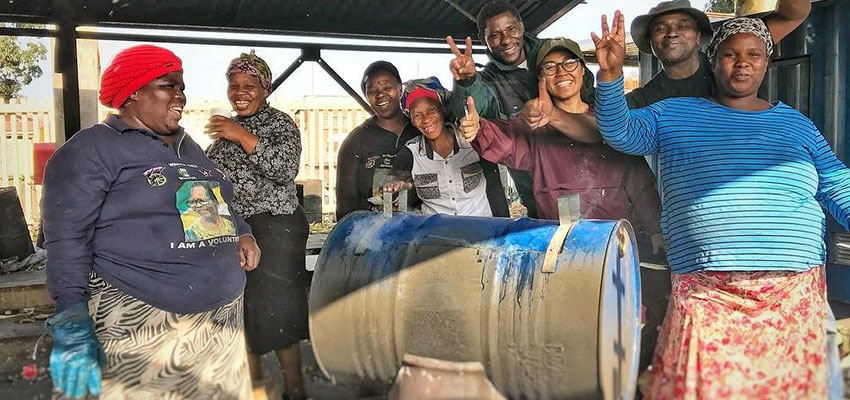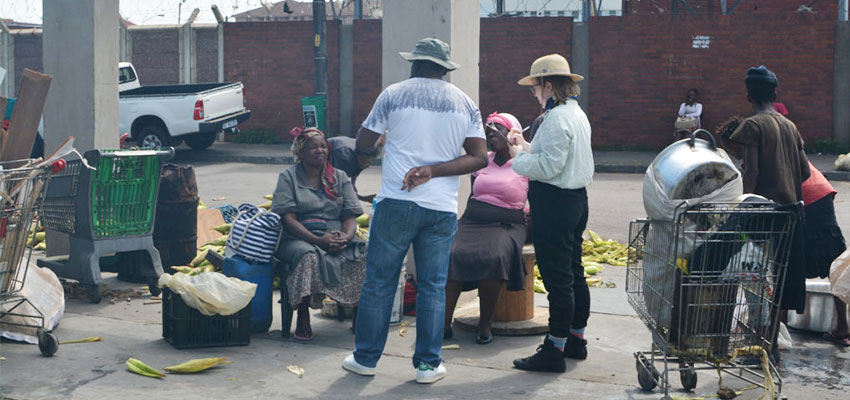
Building a scooter cart to support South African waste collectors!
MIT D-Lab class
D-Lab: Design (2.722J / EC.720) - Spring 2024
Student team
- Celeste Meza (‘25 Business Management) is a yoga enthusiast (???). If she wrote this sentence, it would sound much more eloquent.
- Heidi Yuan (‘24 Art History and Economics) is an experienced student at Wellesley College and is rarely seen without her Flour mocha lattes!
- Catherine Tang (‘25 Electrical Engineering and Computer Science) Catherine is a social butterfly who seems to know every other person on campus!
- Madeline Chang (‘26 Peace & Justice) is the physical embodiment of live, laugh, love, sunshine, and unicorns hailing from the great state of Kansas. Go Kansas City Chiefs!
Community partner
Dorah Marema of Atlantic Fellows
- Gustav Pfeil
Country
South Africa
Problem or Opportunity driving the project
In South Africa, waste collectors face perilous conditions as they navigate the streets alongside vehicles, often with overflowing carts in tow. These collectors urgently require safer and more maneuverable carts, capable of carrying larger loads. The current methods not only jeopardize their safety but also hinder their ability to efficiently collect waste. As the backbone of the recycling chain, their safety and efficiency are paramount to improving waste management practices in South Africa.
Cultural context
South Africa has impressively high recycling rates and waste reclaimers or waste pickers are responsible for 80-90% of the recycling that happens in the country. Yet, the common practice of recycling and public knowledge surrounding recycling are not widespread. Many rural households for example do not have access to a formal waste collection system, instead using their “own refuse dumps", and disposing of waste by burying or burning (von Blottnitz).
Instead it is independent waste collectors who operate individually or within small collectives that are responsible for these high rates of recycling. Despite the importance of the work they do, they still work in the informal service sector and are not officially recognized by many municipalities. Given the lack of resources, many waste pickers
resort to building their own carts or methods of carrying towering loads of waste. Oftentimes waste collectors pull trolleys along main roads, sharing the road precariously with other cars and vehicles. Despite the dangers of this job, many, particularly women, still choose to continue working in this profession because of the need to support their families.
Slowly, activists and awareness groups such as the South African Waste Pickers’ Association are fighting for official waste picker registration and employment opportunities within city waste management systems. We hope that by improving the efficiency of waste pickers in their ability to carry out their work, we can empower waste pickers to gain more leverage and economic mobility.
Theory of change
In a bid to enhance safety for waste collectors, we are developing an affordable scooter cart crafted from locally available materials. This scooter design/structure helps it in two main areas: safety and increased income. Safety wise this mode of transportation notably is steerable and has braking for better control and safety. Additionally, the incorporation of larger wheels ensures greater stability, further enhancing the safety and efficiency of waste collection operations. Efficiency wise, the scooter design allows collectors to ride it, significantly reducing travel time and allowing them to make more trips and increase income.
Proposed solution, including technical details
Our proposed solution involves building a waste scooter that allows for a more efficient means of travel. Waste collectors are able to securely move around larger loads of waste while also traveling at quicker speeds compared to walking. Our scooter will have three wheels, with two larger bicycle wheels in the back supporting the rectangular metal frame and one wheel in the front that allows for turning. We chose materials that are pretty widely accessible including common bicycle parts and 1-inch square tubes to build the body of our cart. We chose to use a scooter design with three wheels placed as far apart on the frame as possible to improve stability. After our first round of tests, we also found that it was important to have braking so that we could stop, especially if moving down inclined roads. Because of that, we added brakes to our scooter that will slow down the scooter from both the back wheels and the front wheel. For the cart portion, we want to attach rings to the side of the cart to allow hooks for securing a load with a bungee cord. This will allow waste pickers the flexibility of attaching different sized loads and gives room for expansion.

Next steps
Alongside our project partners Dorah, an Atlantic Fellow, and Gustav, a civil engineer, and local waste collectors, we will continue to assess its usage in waste management. Based on feedback from local stakeholders, we look forward to incorporating a compacting device to crush plastics and maximize space utilization. This will enable the collectors to collect a larger quantity and thus increase their income.
Contact
Ankita Singh or Eliza Squibb, Co-Instructors D-Lab: Design


